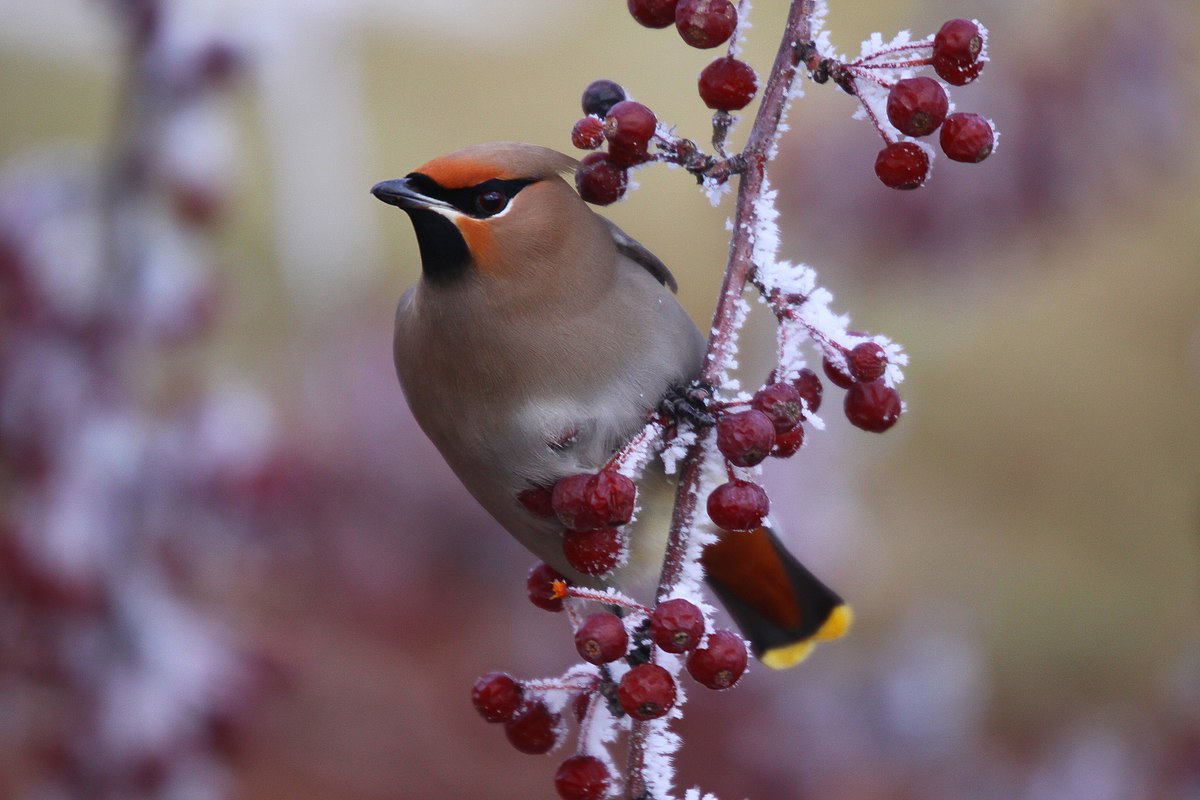Even the dark clouds of Covid have a silver lining as many of us are spending more time outdoors. It’s good for body and soul and when we get back to running guided tours in the Gardens, you should come along to one of our Biophilia tours and learn a bit about the direct benefits of nature.
As amber leaves still drift about you in the ever-cooling air and the sweet smell of cordite drifts into the past you might be starting to think about winter and Christmas. So how are our birds adapting to the change of seasons?
The birds have got the whole breeding thing out of the way. Some pairs will have split up, at least for the year, and joined flocks of their own kind. This is particularly true of our tit family: blue and great and coal and long-tailed. Our non-resident birds have now largely departed, mostly to sunnier climes in Africa. So we’ve said goodbye to the swifts and swallows and martins and warblers and wheatears and many more. Soon we’ll be saying hello to some other visitors, travelling from colder climes; the fieldfares and redwings and the less common waxwings and snow buntings. Many of our own birds are migrating internally; our kingfishers (which have become something of a trademark of the Gardens) tend to fly downriver to the coast. Our more common birds, the crows and thrushes and woodpigeons and starlings, are a hardier kind and generally speaking, manage to shelter from the worst that an Irish winter can throw at them. In the evening, keep an eye out for birds flocking to their nightly roosts; your local group of jackdaws or rooks will have a regular nightly route back to their favourite tree. And of course, if you’re in the right part of the country you might get a display from a murmuration of starlings wheeling through the sky before settling down for the night.

Bohemian waxwing (Bombycilla garrulus)
If you ask a child where birds live, they’ll tell you ‘in a nest’ but generally speaking, birds only build nests for breeding and new nests are built in the breeding season every year. Birds do need shelter though and with most of the leaves gone off the trees, shelter is at a premium. Many will use nooks and crannies in trees and even abandoned nest boxes for shelter. Very cold winters do take a heavy toll on our smaller birds. Birds of the same species are known to huddle together for warmth. Wrens in particular, who are normally solitary birds, will bunch up; the more the merrier. They weigh about ten grams, the weight of a €2 coin, so heat is lost easily though birds do benefit from a higher body temperature than humans. Birdwatchers trade stories of the number of wrens they have seen in a bunch. The biggest number I have heard of is sixteen! Perhaps they are making plans for dealing with the wran-boys on St. Stephens Day (Lá an Dreoilín) when wrens are ceremonially ‘hunted’ throughout the land. Long-tailed tits do this too. In really cold weather you will see birds fluffing up their feathers, trapping a layer of cold air to keep them warm. They can also preen themselves, adding oil from a special glad to rain-proof their feathers.
Really cold weather has a way of bringing birds closer to us. Your garden feeders with fresh water will be particularly attractive in the snow. You might find normally shyer birds letting down their guard, so keep an eye on the feeders for siskins and bramblings and blackcaps and maybe even great-spotted woodpeckers along the east coast.
If you’re near a body of water, you’ll notice our water birds don’t let the Irish weather hinder their industry. They don’t really sleep like us; they are guided by the tides. Waders, in particular, sleep or ‘loaf’ between tides and spend the rest of the time looking for food. Many new ducks and geese and waders arrive for winter. Those of us living on the east coast are familiar with flocks of grass-mowing brent geese avoiding the now-freezing temperatures of their breeding grounds in Canada. You may notice one or more of our native herons standing along the shore, like old men in grey with their hands in their pockets. If you’re getting out to the local pond with the kids, you’re probably used to bringing bread with you. Despite its widespread use, bread is not good for wildfowl. Specialty providers do sell grain-based food for ducks and swans but a simpler road is to bring some mixed salad leaves or diced vegetables; much better for the birds.
If you do nothing else this winter, take a long walk on a crisp winters day, away from the concrete. Even on those dull days when the air is still and the smoke travels straight up, keep an eye and ear for the winter birds going about their business. As Thomas Hardy notes, in the ‘Darkling Thrush’, the ecstatic song of a mistle thrush in the brambles provides hope for the soul.
